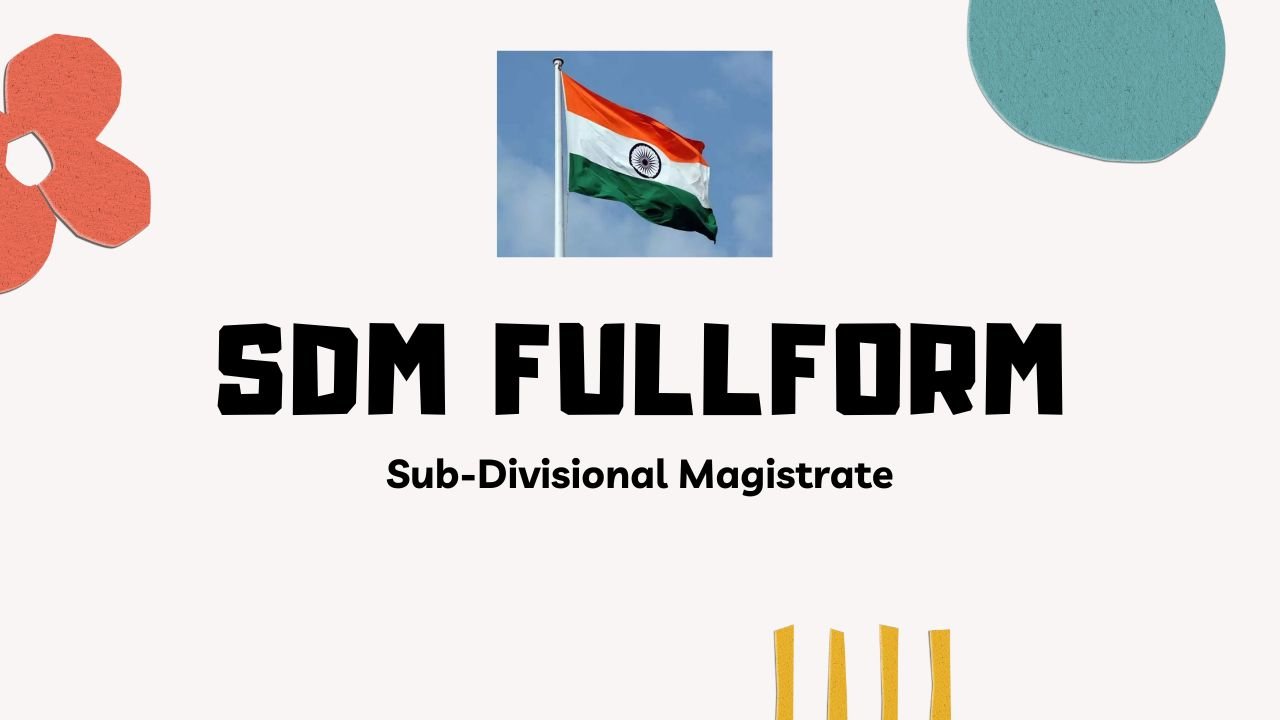HIn the realm of government administration, the term SDM is often encountered, especially in the context of district-level governance in countries like India. But what exactly does SDM stand for, and what are the roles and responsibilities associated with this position? In this article, we will delve into the SDM full form, its significance, and the crucial role it plays in the administrative framework.
What is the Full Form of SDM?
The SDM full form is Sub-Divisional Magistrate. The SDM is an important administrative officer who operates at the sub-division level, which is a segment of a district. He is entrusted with a variety of responsibilities that range from maintaining law and order to overseeing developmental activities within their jurisdiction.
Roles and Responsibilities of an SDM
The role of an SDM is multifaceted, encompassing various administrative, judicial, and executive duties. Here’s a breakdown of the key responsibilities:
1. Maintenance of Law and Order
One of the primary duties of an SDM is to maintain law and order within the sub-division. This involves coordinating with the police department, overseeing public safety measures, and handling situations that may lead to public unrest. The SDM has the authority to impose Section 144 of the Criminal Procedure Code (CrPC), which prohibits unlawful assembly of people in certain areas to prevent disturbances.
2. Revenue Collection and Management
The SDM also plays a critical role in the collection and management of revenue within their jurisdiction. This includes overseeing the collection of land revenue, managing land records, and ensuring compliance with various revenue laws. The SDM often acts as an appellate authority for revenue-related disputes at the sub-divisional level.
3. Judicial Functions
In many cases, the SDM also performs judicial functions, particularly in relation to minor criminal cases and disputes. The SDM has the authority to conduct inquiries, hear appeals, and pass orders on matters such as land disputes, encroachments, and public grievances.
4. Supervision of Developmental Activities
Another significant responsibility of the SDM is to oversee and facilitate developmental activities within the sub-division. This includes monitoring the implementation of government schemes, ensuring the timely execution of public welfare projects, and addressing any issues that may arise during the development process.
5. Disaster Management
The SDM is also responsible for disaster management at the sub-divisional level. This involves preparing for and responding to natural disasters such as floods, earthquakes, and cyclones. The SDM coordinates with various agencies to ensure effective disaster relief and rehabilitation efforts.
6. Election Duties
During election periods, the SDM plays a vital role in ensuring the smooth conduct of elections within their jurisdiction. This includes overseeing the election process, ensuring law and order, and handling election-related grievances.
The Significance of the SDM in Local Governance
The Sub-Divisional Magistrate holds a pivotal position in the administrative structure, serving as the link between the district administration and the grassroots level. The SDM’s role is crucial in implementing government policies, maintaining order, and ensuring the welfare of the public. By effectively managing their responsibilities, the SDM contributes to the overall governance and development of their sub-division.
Challenges Faced by an SDM
While the role of an SDM is vital, it is not without its challenges. The SDM must navigate a complex array of issues, from resource constraints to political pressure. Balancing the demands of maintaining law and order, managing revenue, and overseeing development can be daunting. Moreover, the SDM often faces situations that require quick decision-making and the ability to handle stress.
How to Become an SDM?
Becoming an SDM typically requires passing the Civil Services Examination conducted by the Union Public Service Commission (UPSC) in India. After clearing the examination, candidates are selected for the Indian Administrative Service (IAS), Indian Police Service (IPS), or other allied services. Once in service, an officer may be appointed as an SDM based on their performance and experience.
FAQs
Q1. What is the SDM full form?
The SDM full form is Sub-Divisional Magistrate. This is an administrative position at the sub-division level within a district.
Q2. What are the primary responsibilities of an SDM?
The primary responsibilities of an SDM include maintaining law and order, managing revenue collection, performing judicial functions, overseeing developmental activities, disaster management, and election duties.
Q3. How does one become an SDM in India?
To become an SDM in India, one must pass the Civil Services Examination conducted by the UPSC and be selected for the Indian Administrative Service (IAS) or other related services. After joining, the officer may be appointed as an SDM based on their experience and performance.
Q4. What challenges does an SDM face?
An SDM faces several challenges, including managing law and order, handling revenue-related issues, overseeing development projects, dealing with political pressure, and responding to disasters. The role requires strong decision-making skills and the ability to work under pressure.
The position of SDM is integral to local governance, ensuring that the sub-division functions smoothly and effectively. Understanding the SDM full form and the responsibilities associated with the role provides insight into the crucial work these officials perform in maintaining order and promoting development at the grassroots level.
Read our more blog –Chennai Super Kings vs Gujarat Titans Standings
